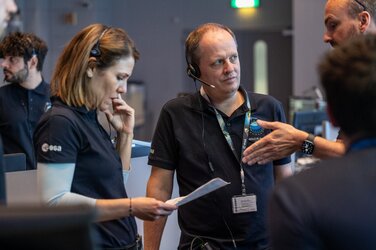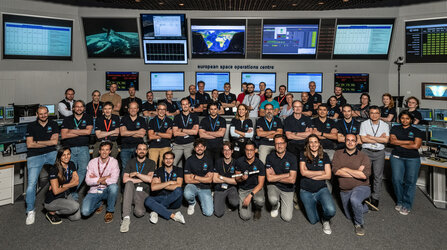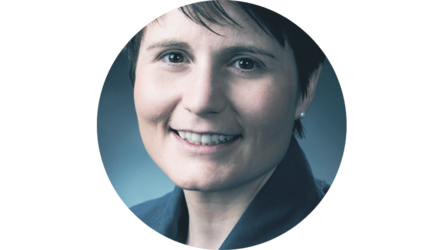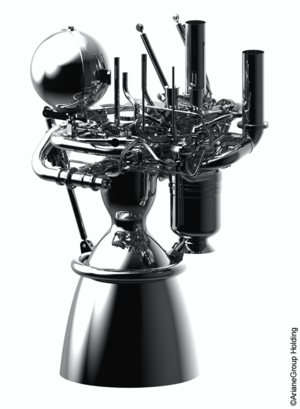Accept all cookies Accept only essential cookies See our Cookie Notice

About ESA
The European Space Agency (ESA) is Europe’s gateway to space. Its mission is to shape the development of Europe’s space capability and ensure that investment in space continues to deliver benefits to the citizens of Europe and the world.
Highlights
ESA - United space in Europe
This is ESA ESA facts Member States & Cooperating States Funding Director General Top management For Member State Delegations European vision European Space Policy ESA & EU Space Councils Responsibility & Sustainability Annual Report Calendar of meetings Corporate newsEstablishments & sites
ESA Headquarters ESA ESTEC ESA ESOC ESA ESRIN ESA EAC ESA ESAC Europe's Spaceport ESA ESEC ESA ECSAT Brussels Office Washington OfficeWorking with ESA
Business with ESA ESA Commercialisation Gateway Law at ESA Careers Cyber resilience at ESA IT at ESA Newsroom Partnerships Merchandising Licence Education Open Space Innovation Platform Integrity and Reporting Administrative Tribunal Health and SafetyMore about ESA
History ESA Historical Archives Exhibitions Publications Art & Culture ESA Merchandise Kids Diversity ESA Brand Centre ESA ChampionsLatest
Space in Member States
Find out more about space activities in our 23 Member States, and understand how ESA works together with their national agencies, institutions and organisations.
Science & Exploration
Exploring our Solar System and unlocking the secrets of the Universe
Go to topicAstronauts
Missions
Juice Euclid Webb Solar Orbiter BepiColombo Gaia ExoMars Cheops Exoplanet missions More missionsActivities
International Space Station Orion service module Gateway Concordia Caves & Pangaea BenefitsLatest
Space Safety
Protecting life and infrastructure on Earth and in orbit
Go to topicAsteroids
Asteroids and Planetary Defence Asteroid danger explained Flyeye telescope: asteroid detection Hera mission: asteroid deflection Near-Earth Object Coordination CentreSpace junk
About space debris Space debris by the numbers Space Environment Report In space refuelling, refurbishing and removingSafety from space
Clean Space ecodesign Zero Debris Technologies Space for Earth Supporting Sustainable DevelopmentLatest
Applications
Using space to benefit citizens and meet future challenges on Earth
Go to topicObserving the Earth
Observing the Earth Future EO Copernicus Meteorology Space for our climate Satellite missionsCommercialisation
ESA Commercialisation Gateway Open Space Innovation Platform Business Incubation ESA Space SolutionsLatest
Enabling & Support
Making space accessible and developing the technologies for the future
Go to topicBuilding missions
Space Engineering and Technology Test centre Laboratories Concurrent Design Facility Preparing for the future Shaping the Future Discovery and Preparation Advanced Concepts TeamSpace transportation
Space Transportation Ariane Vega Space Rider Future space transportation Boost! Europe's Spaceport Launches from Europe's Spaceport from 2012Latest
Key stages in Aeolus’ reentry
Thank you for liking
You have already liked this page, you can only like it once!
In orbit for almost five years, ESA’s Aeolus wind mission has exceeded its design life. The satellite’s remarkable Aladin instrument beamed down seven billion pulses of UV light to profile Earth’s wind. Aeolus was never designed for a controlled reentry, but ESA is going above and beyond by attempting an assisted reentry – the first of its kind – to make the procedure even safer.
Gravity and the grasping wisps of Earth’s atmosphere as well as solar activity are dragging Aeolus down from its operational altitude of 320 km. Once Aeolus reaches 280 km, a series of commands will use the satellite’s remaining fuel to guide it towards the optimal position for reentry.
A first manoeuvre will lower the satellite to an altitude of 250 km. Four manoeuvres then usher Aeolus down to 150 km. Then the vast majority of the satellite will burn up in Earth’s atmosphere. However, some pieces of debris might reach Earth. Many months of expertise have gone into planning the optimal location for reentry to minimise the already extremely remote possibility that falling debris could pose a risk to life or infrastructure. The flight control team is aiming at a stretch of ocean beneath the satellite’s track – a long stretch of open water as far away from land as possible.
If this assisted reentry attempt has to be aborted, which could still happen, Aeolus’ natural reentry continues.
Download the pdf version.
-
CREDIT
ESA -
LICENCE
ESA Standard Licence

Assisting reentry for Aeolus

Preparing Aeolus's assisted reentry

Aeolus control team wraps up successful reentry operations

Aeolus reentry: the breakdown















 Germany
Germany
 Austria
Austria
 Belgium
Belgium
 Denmark
Denmark
 Spain
Spain
 Estonia
Estonia
 Finland
Finland
 France
France
 Greece
Greece
 Hungary
Hungary
 Ireland
Ireland
 Italy
Italy
 Luxembourg
Luxembourg
 Norway
Norway
 The Netherlands
The Netherlands
 Poland
Poland
 Portugal
Portugal
 Czechia
Czechia
 Romania
Romania
 United Kingdom
United Kingdom
 Slovenia
Slovenia
 Sweden
Sweden
 Switzerland
Switzerland
























